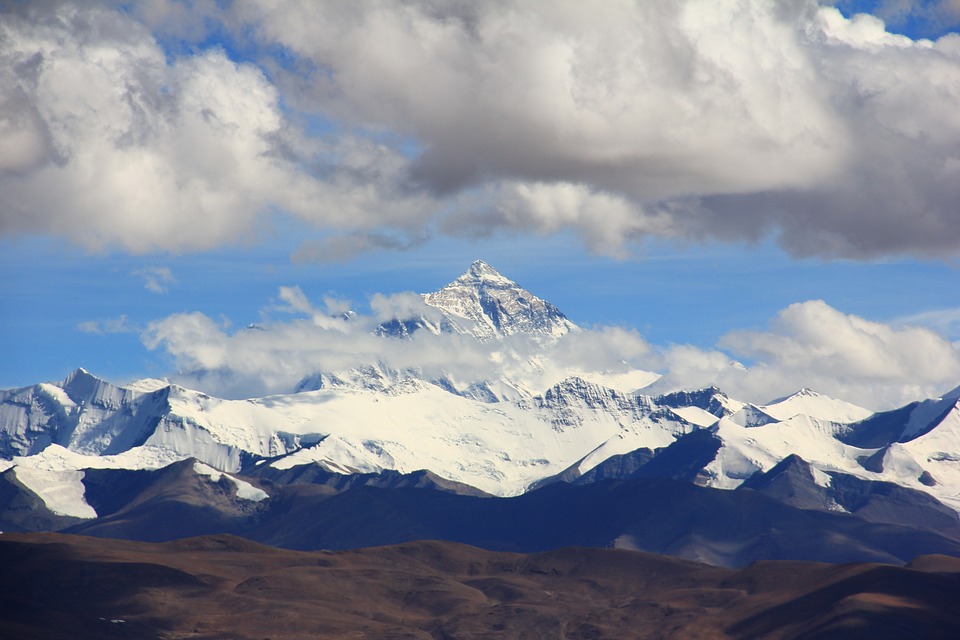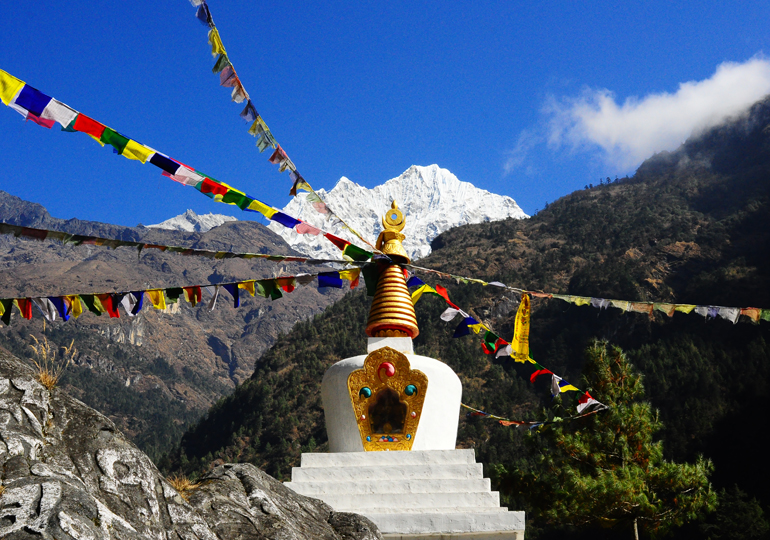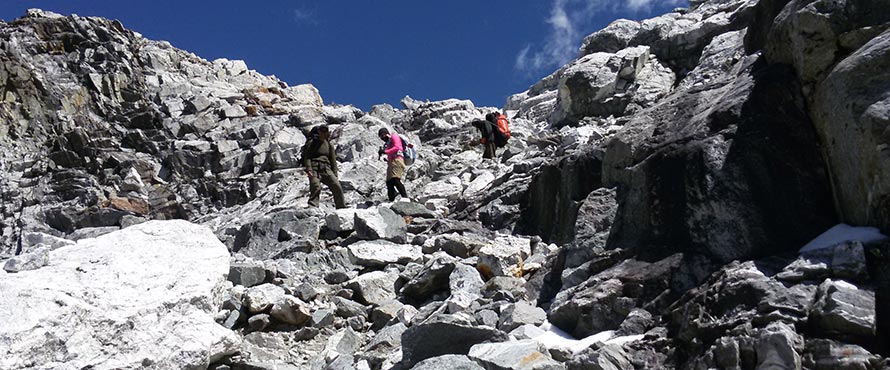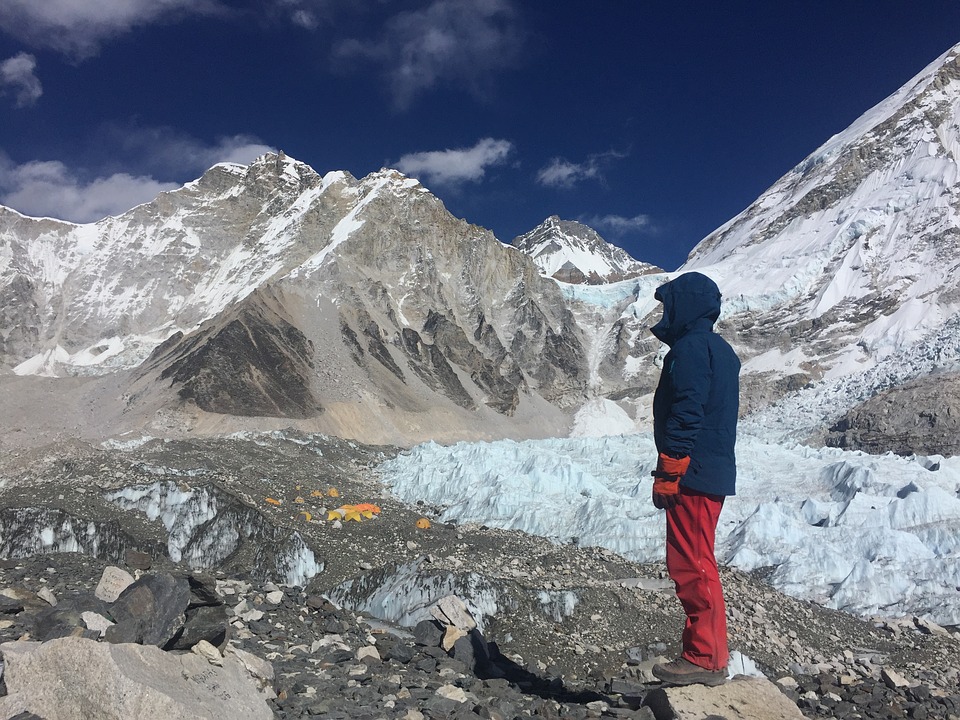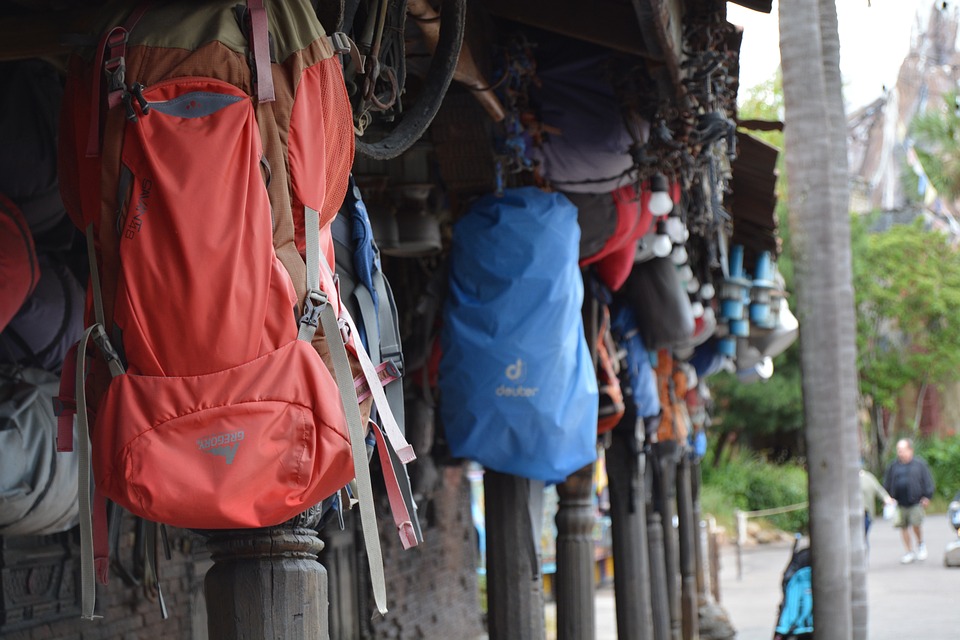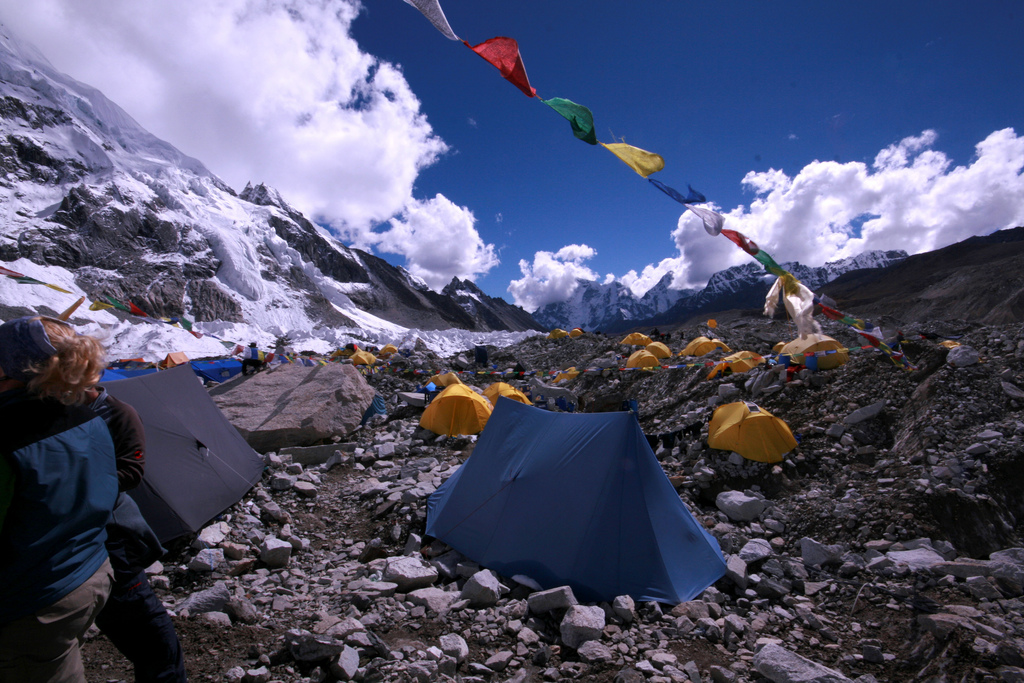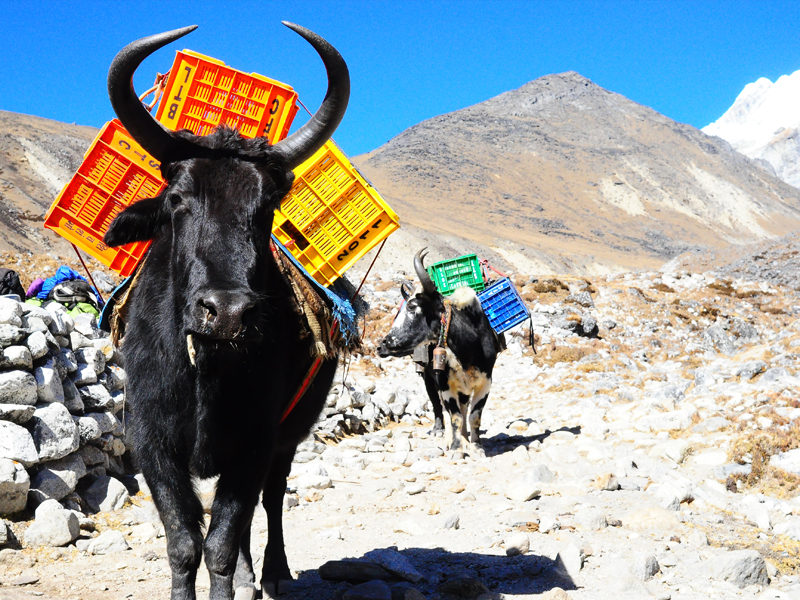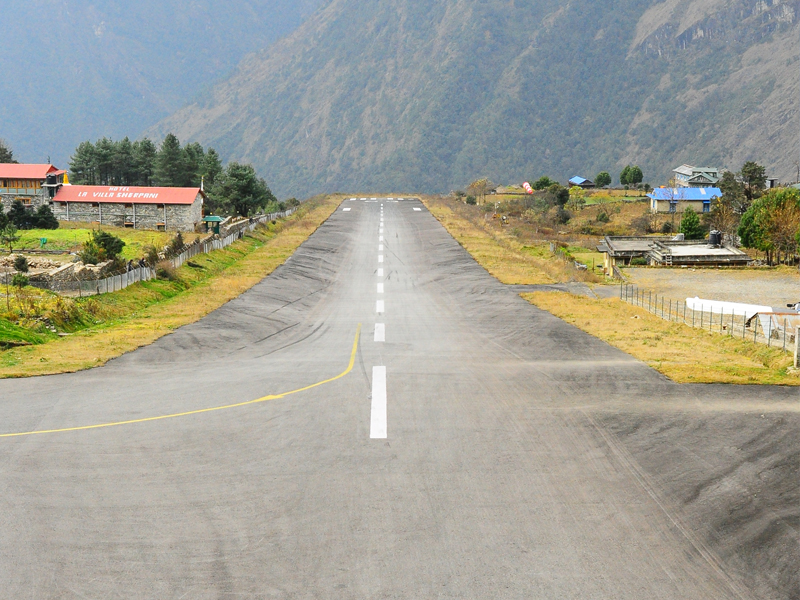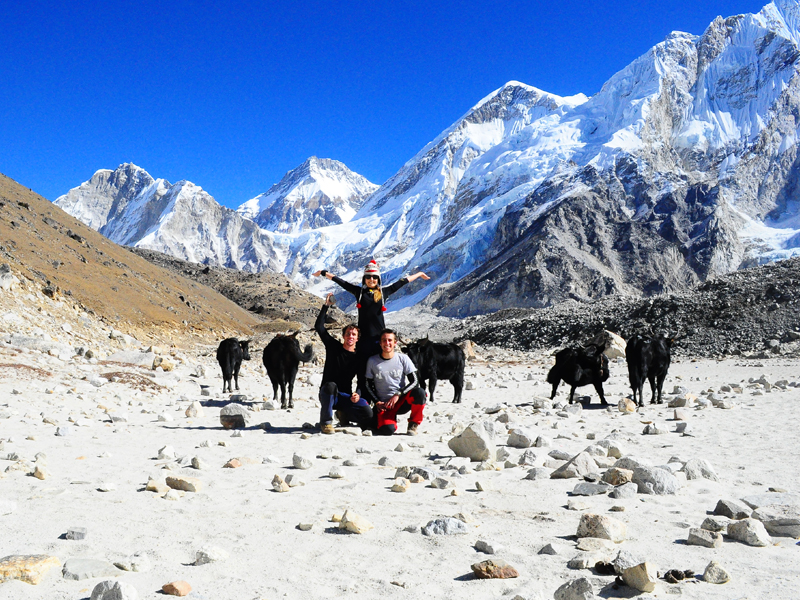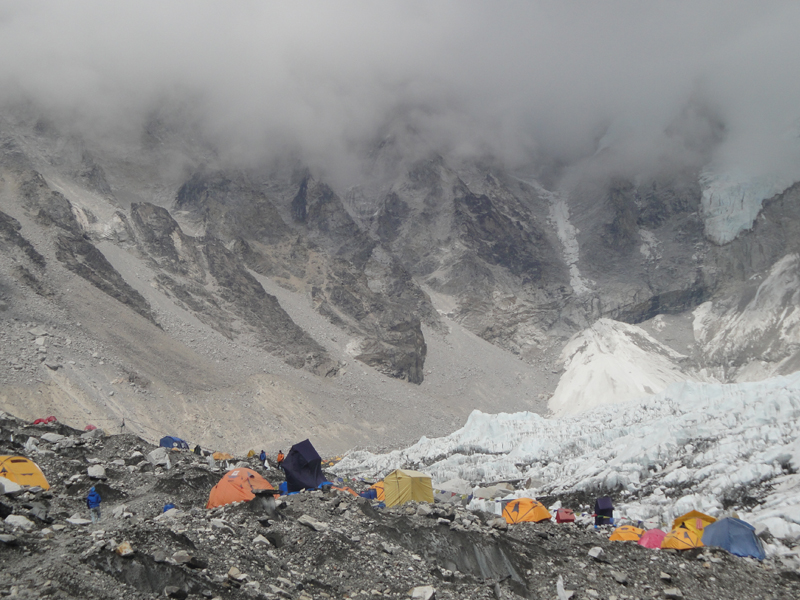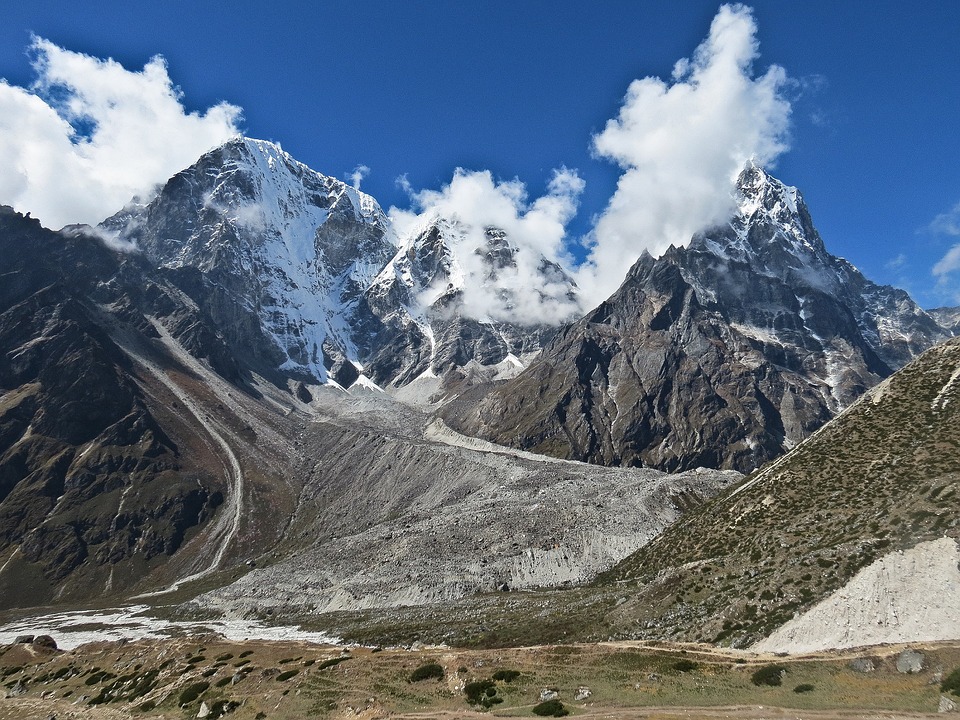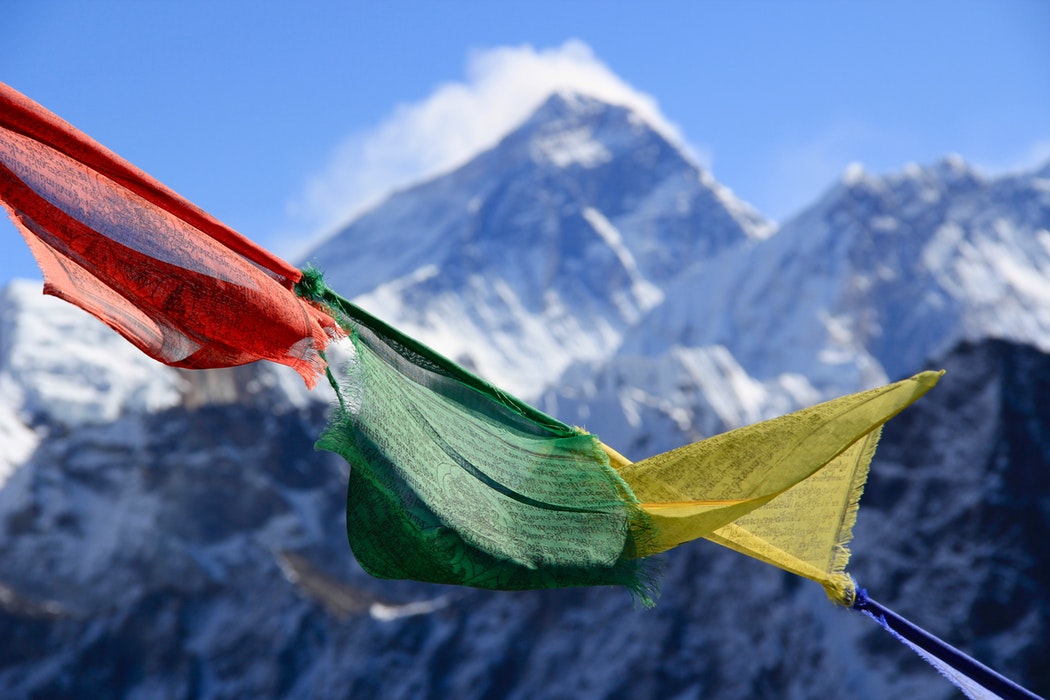20 Days Jiri to Everest Base Camp Trek
The trekking route from Jiri to Kalapathhar is a longer and more varied trek to the Everest Base Camp, which is in fact the old Mt. Everest expedition route used on the first successful ascent.
This trek passes through spectacular villages with exotic monasteries in Junbesi (2675 mt.) and to Khartung which offers the first view of Everest and host of other peaks like Thamserku (6608 mt.), Kantega (6779 mt.), Kusum Kangru (6367 mt.) and Mera Peak (6654 mt.). Further to Traksindo Pass (3071 mt.) and Ringmo. This is a classic trekking region which is a variation of the Everest trail to avoid the busier standard route and to see Sherpa villages that are less crowded. The trek emerges high up in the Khumbu valley and follows the trail to Everest Base Camp along with a superb views of Everest, Lhotse, Nuptse and Makalu.
DAY 1: Arrival in Kathmandu (1,370 metres)
Upon arrival at Tribhuwan Intl Airport in Kathmandu, a representative will be waiting, well in time, to welcome you to this land of towering Himalayas. Once reaching your hotel in a car from the airport, all you need to do is check in and enjoy the refreshment served. We then visit the local office for discussion on trekking, introduction to the guide and porter and settlement of dues if any.
Since you will still have some time left for a walk around Thamel, you can do so if you please. And of course you can join a tour in Kathmandu.
DAY 2 Kathmandu to Bhandar (2,190m) 7-8 Hours drive.
Start our long trip to Everest Base Camp by express bus to Jiri. This is a scenic drive that goes through several beautiful villages, mountain hills, rivers, waterfalls and terrace fields.
Set up as agricultural development centre by the Swiss Government Aid in 1938, Jiri village is one of the most beautiful village we pass before arriving in Bhandara. Spend the night in the guest house in Bhandar
DAY 3 Bhandar to Sete (2,575mt), 4-5 hours walk.
After breakfast, start our first day of walking. Going down hill to reach Likhu Khola and cross the bridge.Following windy path leading us to Kinja Village where we stop for our lunch. After lunch continue the trek climbing up hills. The trail goes through numerous farm houses and terrace fields , small settlements with colorful houses to arrive in Sete Village.
Spend the night in the guest house in Sete.
Day 4 Sete to Lamjura pass (3,530) to Junbesi (2,680m), 6-7 hours walk
After breakfast we start our trek. Gradual climb from the beginning , passing throug some small teahouse, beautiful rhododendron forest to reach the Lamjura Pass. This is the highest point between Jiri and Namche Bazaar, normally windy but offer great view of surrounding green mountains and valleys.
After the pass, continue our walk through green forest to arrive small settlements of Takto and then to Junbesi to end our long trip for today. Spend the night in the guest house in Junbesi.
DAY 5: Junbesi to Nunthala (2,330m), 5-6 hours walk
After breakfast, we start our trek crossing the wooden bridge over Junbesi Khola and arrive at the trail junction. We follow the left-hand trail which goes to Khumbu. Our trails turns north and descend through Salung. On a clear day we can see Mt. Everest towards north east.
After following hidden route in the dense forest, streams and huts, arrive in Nunthala to finish our trek for today. Spend the night in the guest house in Nunthala.
DAY 6: Nunthala to Kharikhola (2194 mt), 5-6 hours walk
After breakfast we start our trek descending from Nunthala to Dudhkoshi River- Walking along Dudhkoshi River before crossing the Bridge, then the a trail leads through terraced fields and yards of houses, forest to reach the village of Jubing inhabited by ethnic group of Rai.
From Jubing, climb upto the ridge, and continues to the village of Khari Khola to end our trek for today. Spend the night in the guest house in Kharikhola.
DAY 7: Kharikhola to Puyan (2890 mt.), 4-5 hours walk
After breakfast we start our trek .Today we first assend to Bupsa danda through nice green forest and asscend to Bhumsing village. Spending some time here, continue our trek to north side of the valley and arrive in Puyan Village. Walking through forest, be aware of wild animals,not a dangerous but have an opportunity to take picture.
Spend the night in the guest house in Puyan.
DAY 8: Puyan to Phakding (2,610m), 5-6 hours walk
After breakfast we start our trek through long winding trail with few small ups and downs to Surke. Then We climb north to Chaurikharka, a large scattered village with monastery and high school. This village is very fertile for barley, wheat and green vegetable. Our trail joins from Lukla towards Phakding, making the path quite busy with more trekkers, porters and pack animals .
The trail is relatively comfortable and passes through four Sherpa villages. Houses with stone walls and colourful roofs, huge prayer stones with mantras from the teachings of Buddha carved in them, monasteries with busy budding Lamas, several mountains already in sight and rivers and waterfalls along the way to reach Phakding Village.
Spend the night in the guest house in Phakding.
DAY 9: Phakding to Namche Bazaar (3,440; 5-6-hour walk)
After breakfast, we walk for about 2 hours to Jorsalle Village for lunch. The route starts along the banks of Dudhkoshi River and crosses two suspension bridges before reaching Monjo Village. A 20-minute descent towards the end, finally, leads to Jorsalle Village, the entrance to the Sagarmatha National Park as well as the last village until Namche Bazaar.
After lunch, we walk for around 3 hours to Namche Bazaar. With the raging Dudhkoshi River mostly to the left for about half an hour before crossing a suspension bridge, the trail in its final 2 hours ascends through a pine forest. In reaching Namche, the administrative headquarter of the Khumbu Region, the ascent often demands a little extra even from seasoned legs.
Spend the night in a hotel in Namche.
DAY 10: A day of acclimatization at Namche Bazaar
It’s time for a trip to Sagarmatha National Park Museum after breakfast. Most people use their time at the Museum trying to gain some insight into the Everest Region – about the highest peaks, animals and vegetation that rule the region as well as the Sherpa culture and experiences of many trekkers and climbers.
We then leave the Museum and walk for about an hour to the Everest View Hotel for lunch. Constructed on a site in an altitude higher than any other on earth and ideally positioned, the hotel presents all its guests with ample individual space to appreciate the grandeur – a typical Sherpa village in the Khumjung Valley below to the North-West; on a hilltop above the village, the Khumjung Monastery, where a preserved skull which the locals believe to be that of a Yeti can be witnessed upon request; Mt Khumbila, a massive rocky elevation worshiped as a deity by the locals and, thereby, a restricted peak for climbing, right above the valley; and to the North, captivating views of the Himalayas, including Mt Everest, Mt Lhotse and the beautiful Ama Dablem.
After climbing down to Namche Bazaar in the afternoon, a walk around the Bazaar is a preferred involvement to some and indulgence to others. Spend the night in the hotel.
Day 11: Namche Bazaar to Tyangboche (3,867 metres; 5-6-hour walk)
We start trek after breakfast and stop at Thanga for lunch after about 3 hours’ walk. The comfort of the trail up to Kyangzuma Village ends with the moderately challenging descent to Thanga. In Thanga, a pretty small settlement with three constructions at most, the trek stops for lunch in a teahouse.
While the food is prepared, many people find waiting an experience of its own – the rumbling of Dudkhoshi River from the deep gorge below reaching the eardrums from the right, the eyes exploring the presence of the pine and rhododendron trees densely populated in the area, a gentle breeze caressing the hair while waiting for lunch hungry after several hours of walk.
After lunch, we walk for around 3 hours to Tyangboche. From here on, the trail ascends sharply mostly through forests filled with pine and rhododendron trees all the way to Tyangboche. A spectacular view of the beautiful Mt Ama Dablam meets the eyes as soon as they enter the village. The next to capture the attention is the biggest monastery in the Khumbu Region, the Tyanboche Monastry.
The settlement presents a typical picture of a village in the laps of the Himalayas – houses made of stones in a cluster separated by narrow alleyways, a monastery and/or a temple highlighting the beliefs of the people, people going about displaying a simple way of life, a forest nearby, a river flowing pretty close and between two the snow caped Himalayas.
Spend the night in a hotel in Tyangboche.
DAY 12: Tyangboche to Dingboche (4,410 metres; 5-6-hour walk)
After breakfast, we walk for about 3 hours to Pangboche Village for lunch. With a downhill to the village of Diboche before a long gradual ascent, through a rhododendron forest, across a bridge, the trail finally brings its travelers to Pangboche Village. With narrow footpaths carved along the edges of hilltops, parts of the route demand alertness while being constantly drawn by the breathtaking views on offer in front, now that Mt Ama Dablam gets closer and closer with every step forward.
After lunch in Pangboche, we start walking again for about 3 hours to Dingboche. With the magnificent Mt Ama Dablam to the right all the time, this course triggers some contemplation into the phenomena in the immediate environment along the way – yaks with loads on their backs walking in a file, a tahr jumping care freely on slopes only perhaps the most daring would think of giving a shot at and a male impeyan pheasant – the national bird of Nepal – dancing with a hope to impressing a female nearby who till now seems to simply be turning a blind eye … a smile and a gentle shake of the head in sincere appreciation of the visually appealing yet intellectually challenging ways of things.
Dingboche, with around forty households, is home to approximately two hundred locals. Spend the night in a hotel in Dingboche.
DAY 13: A day of acclimatization in Dingboche
After breakfast, we pack our lunch and go up a steep climb for around three hours to Nangkar Tshang at an altitude of 5,616 metres. From this vantage point, the view when facing Norht includes Mt Lothse and Mt Nuptse in the front, Lotse Shar and Peak 38 and Island Peak to the front-right, Mt Ama Dablum to the right, Mt Thamsherku, Mt Kantega and Taboche Peak to the back and Chola Tse Peak and Lobuche Peak to the left.
After spending some time in Nangkar Tshang, we come back to Dingboche and spend the night here.
DAY 14: Dingboche to Lobuche (4,910 metres; 4-5-hour walk)
After breakfast, we walk for about 4 to 5 hours to Lobuche Village. A steep climb most of the way, the trail starts out of Dingboche, past a chorten, ascending to Dugla at the end of the terminal moraine of Khumbu Glacier … climbing steeply to Chukpo Lari past a line of memorials commemorating climbers who have lost their lives in Everest, and, finally, easing off for the last 20 minutes or so.
Sensing the approaching destination, the legs, which have otherwise almost given up to the demands of the walk, gather all they’ve got with this newly found enthusiasm. After lunch, Lobuche, a tiny hamlet with a few teahouses, welcomes its visitors to either investigate the ridge on the opposite side of the Khumbu Glacier or watch the fascinating changes in colour the sunset brings on almost the top half of Mt Nuptse.
Spend the night in a teahouse in this settlement.
DAY 15: Lobuche to Gorakshep (5,160 metres) and Gorakshep to Everest Base Camp (5,320 metres) 7-8-hour walk
After breakfast, we walk for about 3 hours to Gorakshep. After a three-hour climb to Lobuche Pass on rocky paths and under windy conditions followed by a brief stop for a cup of tea, the trek stops at Gorakshep for accommodation arrangements and lunch.
After lunch, we start walking again for 2 hours to Everest Base Camp. Walking on the lateral moraine of the Khumbu Glacier, audibly making cracking sounds, most manage to push forward up the grueling climb uphill purely on determination as the level of oxygen drops to around 50 % lower to that at the sea level.
A stop on the way here for a short while … five of the world’s highest mountains crammed in a small area … fascinating! Ascending the side of the glacial moraine for a couple of more hours before landing on the moraine itself, the trail finally reaches the Everest Base Camp. Photographs, smiles, hugs … in sheer admiration of the endurance to the Base Camp of the highest mountain on earth. We walk back to Gorakshep and spend the night.
DAY 16: Hike to Kala Pathar (5,550 metres) and Gorakshep to Pheriche (4,240 metres) 6-7-hour walk
We start early morning and walk for almost 2 hours to Kala Pathar. The almost 200-metre climb, taxing by now after several days on the trot, leads to the top of Kala Pathar. A 3600 view of the Khumbu Himalayan range – Mt Everest and Mt Lhotse in the front, Lingtren and Khumbutse Peaks to the front-left, Mt Pumori to the left, Numerous other peaks to the back-left, back and the back-right, Mt Taboche and Cholatse to the right, Mt Nuptse to the front-right.
After lunch, we start walking to Pheriche. Through a large glacial valley with Cholatse (6,335 metres) and Tobuche Peak (6,495 metres) to the right and Pokalde (5,693 metres) and Nangkar Tshang (5,616 metres) to the left, from a different route from the end of Khumbu Glacier in Dugla, the descent puts on a smile on all faces despite the force of the cold wind hitting them constantly. Above the Tsola River, primarily a farming village growing potatoes and buckwheat as well as keeping yaks.
Pheriche today provides accommodation and food to trekkers and climbers through its many lodges in place. Spend the night in Pheriche.
DAY 17: Pheriche to Namche Bazaar (3,440 metres; 5-6-hour walk)
After breakfast, we walk downhill to Tyangboche. After lunch here, we walk the rest to Namche Bazaar. Spend the night in a hotel in Namche.
DAY 18: Namche Bazaar to Lukla (7-8-hour walk)
We leave Namche Bazaar after breakfast and stop at Phakding Village for lunch after about 4 hours. We walk the next 4 hours (approximately) to Lukla.
Spend the night in a hotel in Lukla.
DAY 19: Lukla to Kathmandu
We fly back to Kathmandu and reach the hotel in time for lunch. The afternoon is for shopping for some, for buying souvenirs for others and for doing whatever they please for still others. In the evening, however, please allow us the pleasure of your company during the fare-well dinner. Spend the night in your hotel.
DAY 20: Departure from Nepal
If you have a morning flight, we leave for Tribhuwan Intl Airport early morning in a car arranged by the office. If your flight is in the late afternoon or evening, only your WILL shall dictate your involvement or indulgence as you may please before leaving for Tribhuwan Intl Airport in the vehicle.

